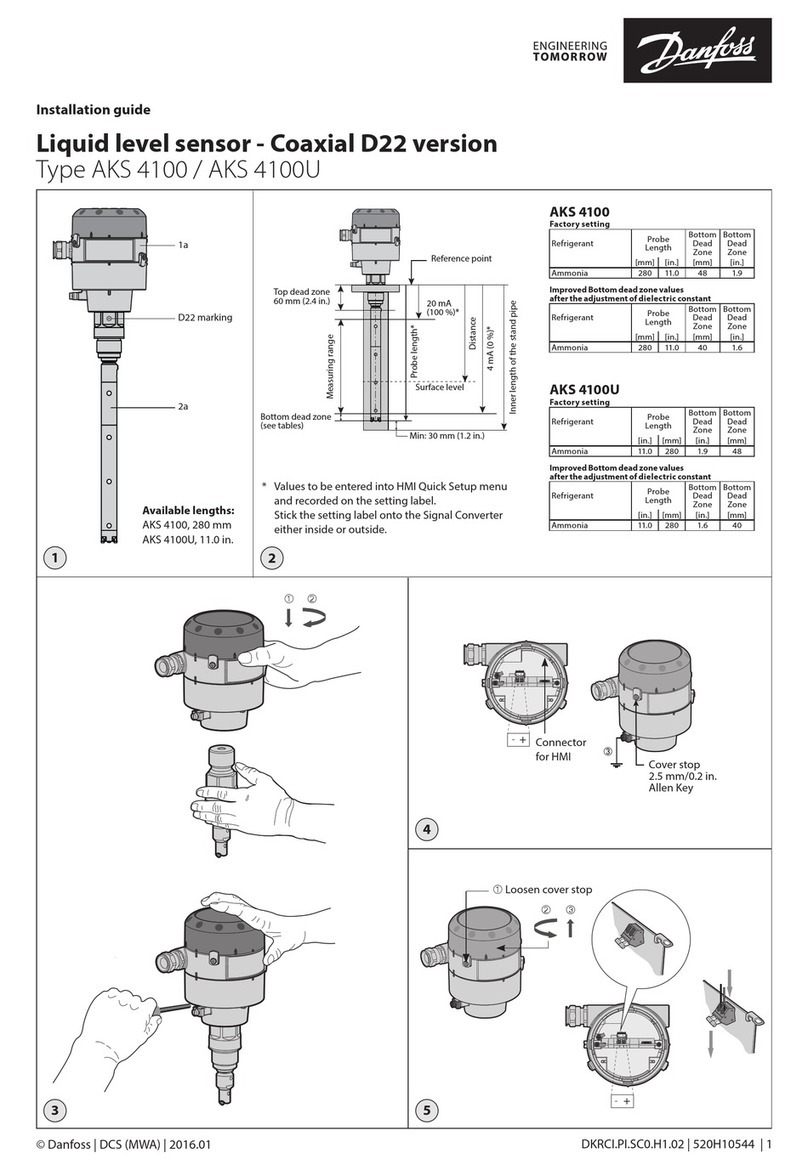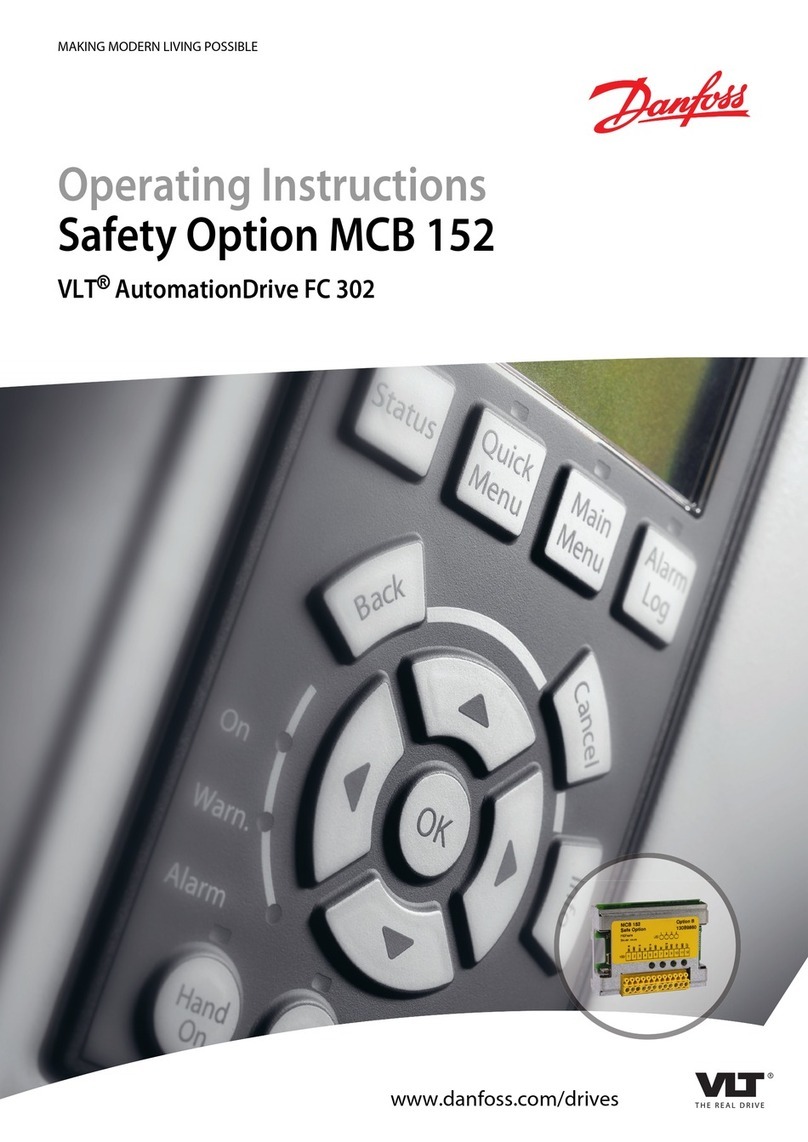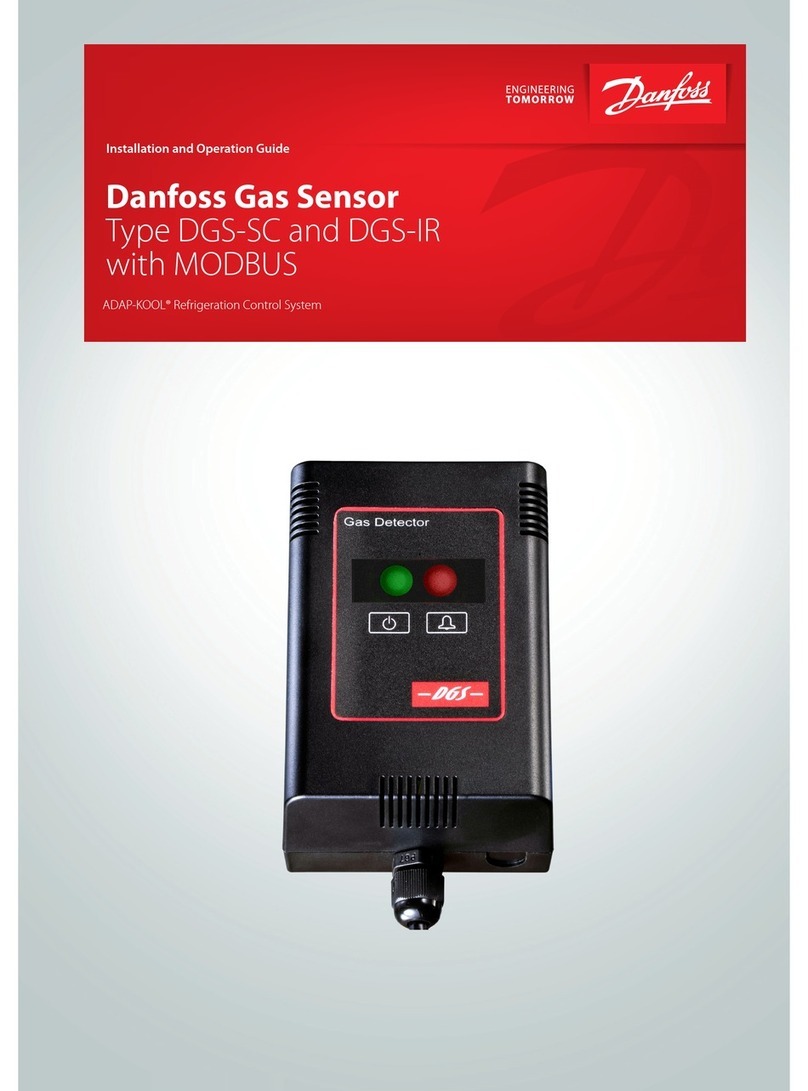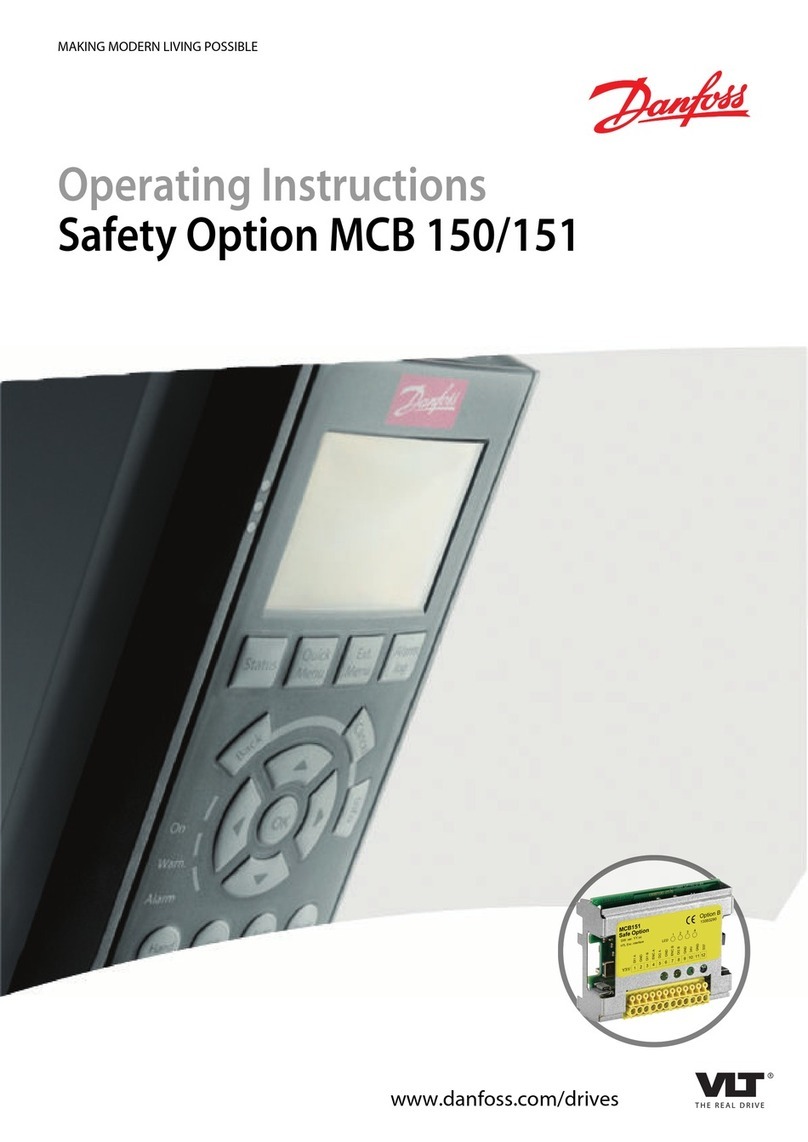
DEVItector™ II V2User Guide
BC421332622232en-0101014 | ©Danfoss | FEC | 2022.07
2. About this guide
This DEVItector™ II V2 guide includes information about
tracing and correcting faults in electric heating cables.
The equipment and this guide are intended solely for
personnel working in the interest of Danfoss A/S. No
part of the equipment is to be resold or handed over
to other parties.
The equipment has been tested by Intertek
according to EN/IEC 61010-1 with amendments,
EN/IEC 61010-2-030 with amendments and
EN/IEC 61326-1 with amendments to protect you.
You are obligated to read this instruction carefully.
You are dealing with a potentially dangerous piece of
equipment. You are responsible for keeping yourself
and other persons and property safe.
WARNING: Any kind of equipment must be used
by instructed personnel. Any user must sign page
Declaration on Safety Rules (see Appendix A) to conrm
that he/she fully understands this Guide, all instructions
and the safety precautions necessary for operating the
DEVItector™ II V2.
3. How it works
Troubleshooting with DEVItector™ II V2 is a structured
technique for tracing and correcting faults in electric
heating cable systems.
The DEVItector™ II V2 comprises troubleshooting
equipment and this guide.
The DEVItector™ II V2 ensures an ecient and easy
tracing of heating cable faults.
The system features:
• Automatic test and measurement of electric heating
cables.
• Provoking faults in order to speed up the
troubleshooting process.
• Tracing hidden heating cables.
• Locating a fault within a few centimeters.
An installed and faulty heating cable is shown on Fig. 1.
It is most likely that you do not know the layout of the
heating cable as it is embedded in concrete or covered
by wood. Instead you will use a magnetic sensor to
‘see’ through the oor.
To locate the fault, you will have to create a magnetic
eld along the heating cable. You do this by sending
current through the cable. The trick is to create this
eld only between the cold cable and the fault. Then
the magnetic eld changes abruptly at the fault.
If the fault is a short circuit, you already have a return
path for the current. If the fault is a disruption, you
will have to make a short circuit without knowing the
location of the fault.
This is done by high voltage burning, in which the
polymer insulation between any two conductors
is converted into carbon, which is electrically
conductive.
A high voltage will burn through the weakest point
of the insulation which is at a fault. In case of several
faults, they are treated one after another.
Fig. 1: Heating cable embedded in concrete
and invisible to the eye is made visible to the
DEVItector™ II V2 tracing equipment. After burning
a carbon bridge at the fault, the magnetic eld to be
traced will appear only between the cold cable and
the fault.
Fig. 2: Sketch of magnetic ux of two conductors
carrying current in opposite directions. The magnitude
B of the ux is proportional to the current I and
decreases with distance r to the conductor. The ux of
the two conductors nearly cancels out. Note that the
screen may act as one of the conductors.































